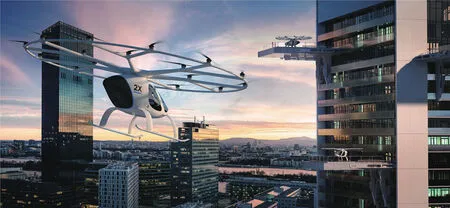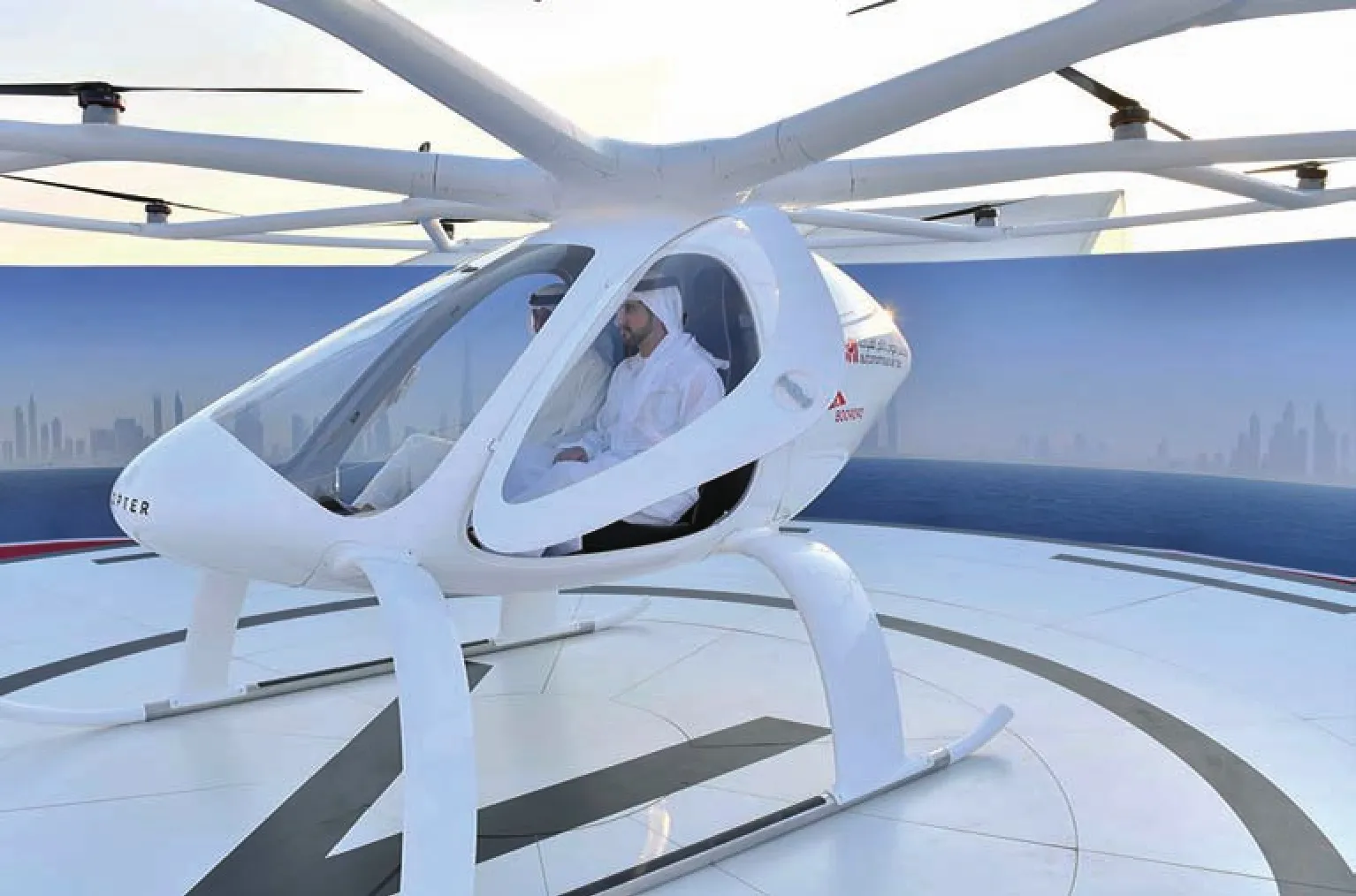FLYING TAXI IS COMING!
Text by Jeff Photos by CFP Translation by Hu Nan
FLYING TAXI IS COMING!
Text by Jeff Photos by CFP Translation by Hu Nan

Traffi c jams in rush hour are a big problem in big cities. No matter how predictable the urban planning is, or how smart the traffi c control is, it goes unavoidably with inextricable traffi c jams during the process of urbanisation, which happens due to the growing population and ownership of cars.
The development of science and technology will provide help in this aspect. DJI and many other famous drone design and manufacture companies have actively offered solutions, providing products like large-scale unmanned aerial vehicles that can carry people fl ying at a low attitude in the city.
For instance, Volocopter, a German startup, signed a deal with Dubai's Road and Transport Authority to begin testing the fl ying taxi in the fourth-quarter. The Volocopter fi rst emerged in 2013 as an audacious electric aircraft, and has gathered quite a bit of momentum in the subsequent years through a series of successful test fl ights and, more recently,a US$29 million investment from Daimler.
Dubai announced its plans to trial the Volocopter at the end of this year, and has rebranded it as the Autonomous Air Taxi (AAT) for its purposes.It is hoped the aircraft will play a role in having autonomous vehicles handle a quarter of all passenger journeys in the city by 2030.
eVTOL
The electric vertical take-off and landing vehicle(eVTOL) uses eight horizontally-oriented propellers to take off and land vertically, while a vertical prop in the rear allows it to switch to faster and more efficient fixed-wing flight once airborne. The airframe also has a ballistic parachute, ensuring passenger safety in
case of an emergency.
Passenger capacity: 4 Empty weight: 2270kg Power type: electric Takeoff/landing mode: vertical Cruise speed: 280km/h Consecutive voyages: 165km Payload: 360kg

It looks very high-end and magnifi cent to carry
passengers with unmanned aerial vehicles. However,only those deep-pocketed and ostentatious princes from Dubai can afford them at the moment.Considering many people have little confi dence in the safety of driverless cars, there may be limited consumers who are willing to commit their lives to the care of the controllers on the ground.
Whether the trial of the Autonomous Air Taxi in Dubai can be successful or not, it seems a wonderful solution to take advantage of low altitude airspace in urban areas to fi x the problems of traffi c jams.And Uber's plan on unmanned aerial vehicles looks pretty steady and reliable.
Last November, the Chief Product Offi cer of Uber,Jeff Holden announced to test the idea of a fl ying taxi in Los Angeles by 2020. The ride-hailing company plans to launch the service with the hope it is well-established before the 2028 Olympic Games in Los Angeles.
UberAir is a network of small, electric aircraft that enable four-person ridesharing fl ights in densely populated areas. The traffi c-beating taxis, which could reach speeds of 200mph (320kph), will cut travel times but cost the same as a car journey.
First initiated in 2016, Uber's plan is to string together a network of electrical vertical take-off and landing vehicles, commonly called eVTOLs, and make them available on-demand. Similar to helicopters, the eVTOL aircraft would take off and land on the tops of buildings and be able to cover distances more quickly and directly compared to cars stuck in traffi c. Also sharing cars and public transport can be added as suppliers to provide the quot;last milequot; service,according to Uber.
According to the plan, Uber will establish an operating network of eVTOLs in 3 steps: beginning with a low density, transiting to a medium density and fi nally achieving a high density.
It is estimated that Uber will run the eVTOL network in a low density from 2023, with 50 vehicles being put into practice in the fi rst year. In the following 3 years a network with 300 fl ight routes operated by 25 eVTOLs will be primarily built, enabling the amount of eVTOLs in a city to increase to 300-500.
At the fi nal stage, Uber will arrange 1000-1200 vehicles within a radius of 50-65 meters, carrying 150,000 passengers daily. Meanwhile, all adopted vehicles will be unmanned.
It is well to be reminded that in order to ensure safety at the extreme, at the fi rst stage with a low density, manned eVTOL will be adopted. However,at the fi nal stage unmanned eVTOLs will be adopted. This not only attempts to reduce the high cost of pilots, since the amount of eVTOLs on duty is so high, Uber could not manage enough pilots to meet the demand even if all pilots on active duty in the world are included.


